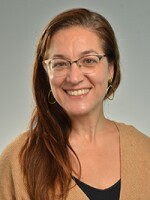Fourth-generation Kansas Citian Joel Goldman has set all of his crime novels in the Kansas City area, in places like the Country Club Plaza, the Quindaro neighborhood, and the historic Northeast neighborhood.
These places aren’t just settings. Goldman considers them characters in his novels. Strawberry Hill, the Kansas City, Kan. neighborhood where many Serbians and Croatians settled, is one of the backdrops in his book Shakedown.
“It has a lot of heart and respect for tradition,” Goldman told KCUR's Gina Kaufmann in an interview on Central Standard.
He says the historic Northeast is a neighborhood that needs a break.
“It’s battered, but still a proud place. It has homes on the historic register, drug traffickers, the parks system—a lot of beauty.” Goldman says tension exists between the wants and needs of those participating in the gentrification of the neighborhood and those who are just trying to make it day-to-day.
Although places might be home to violence, whether in fiction or real life, Goldman says, these are not bad or evil places.
“I think every writer has to decide how they’re going to address the risk of romanticizing or sensationalizing evil, or bad things.”
With that in mind, here are Joel Goldman’s top four places to set a fictional murder in Kansas City:
- A cave in Kansas City, Kan.
From Goldman's book Shakedown, the cave is a remnant of an early twentieth century mining operation. A shaft that leads to the cave is located in a locked, brick structure in Matney Park. - Under an overpass.
In Goldman's No Way Out he describes driving east on Independence Avenue until the name of the road changes to Winner Road. As you approach a defunct billet yard once used to store steel rods and bars, there's a street called Ewing that branches off and goes down a hill toward an intersection. Because Winner Road passes overhead and carries a lot of noisy traffic, the area under this overpass is spooky and deserted. Goldman says it is a place where no one would hear someone scream. - An old, dilapidated farm house in southern Johnson County.
Though this one is fictional, there are many in existence that would fit the bill, as it is isolated, remote and far away from prying eyes. As described in Goldman's book, The Dead Man: “The farmhouse sat on a rise, sheltered on three sides from the wind by stands of maples and oaks. It had been daylight for an hour, the sky heavy and close with leaden clouds, the wind cold and stiff enough to make a man deaf.” - Kessler Park in the historic Northeast.
This setting is used in No Way Out. Goldman writes: "Kessler Park stretches along the northern edge of Northeast Kansas City, beginning near the intersection of The Paseo and Independence Avenue on the west and continuing east. A rambling, undulating green border covers more than four miles. Built beginning in the 1890s as the first of the city's ten thousand acres of parks, many of its hilly and hardscrabble wooded areas remain hard to reach.”
Learn more about Goldman and his effort to bring old mysteries and crime novels back into print.




